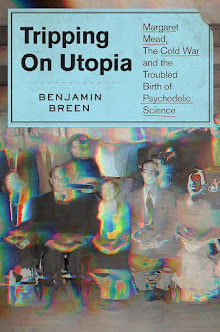The Photochrom photographic process was developed in Zürich, Switzerland in the 1880s by the printing firm
Orell Füssli (apparently still in business as a producer of "highly secure banknotes" and "identity documents" -- see link). The famous
Detroit Publishing Company (née Detroit Photographic Company) purchased exclusive American rights to the process in 1897, which was highly prized prior to the advent of true color film owing to its ability to yield mass reproductions of tinted black and white photographs. Photochroms sold briskly throughout the 1890s. As you can see below, the most popular images were of exotic tourist destinations, crowded urban scenes and landscapes. Today, they fascinate because of the enormously high resolution of the photographic negatives, coupled with the color tinting of an era that we usually view in black and white. I recommend clicking on the photos to get a better of the enormous amount of detail these images contain.
The Photochrom process involved the transfer of black and white film negatives directly onto a series of lithographic plates, which were then inked with various colors matching the scene. Wikipedia provides
some further technical info (perhaps more than you wanted to know). Below are some representative images from
Wikimedia Commons and the Library of Congress
Photochrom collection:
 |
| Mulberry Street in the Lower East Side of New York City, circa 1900. |
 |
| Belgian milk peddlers, 1890s. |
 |
| "Bedouin Chief of Palmyra," 1890s, from a photograph by Felix Bonfils. |
Since these images are easily accesible on Wikimedia and Library of Congress sites I linked to above, I'll just restrict myself to pointing out a few neat details in larger photochroms:
 |
| A beautifully out of focus shot of two young men crossing the Brooklyn Bridge. |
 |
| Tough-looking children and wagon-drivers in Mulberry Street. |
 |
| A medieval-era town hall in Saxony - this almost feels like peering into a fifteenth-century city high street. |
 |
| And my favorite photochrom of all, a wonderfully crisp and evocative portrait of an Irish weaver. |
A sampling of more old fashioned, extremely hi-res photographs can be found on the photoblog
Shorpy. I've also
posted previously about an early color photographic technique that was used to document pre-Soviet Russia to great effect. More technical details on the photochrom process can be found
here. Finally, the website of NYC's Museum of Modern Art has
an interactive website devoted to explaining the workings of lithography, for those interested in how color images were made before the advent of color film.













2 comments:
Wow! These are amazing shots, amazing to think that they're from the turn of the twentieth century. And I can't believe I haven't encountered photocrom images before!
damit. expand the width of your blog, its not like you can't. dang it.... anywho... i like ur blog. :)
Post a Comment